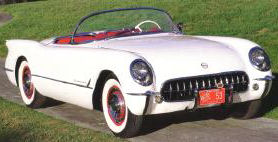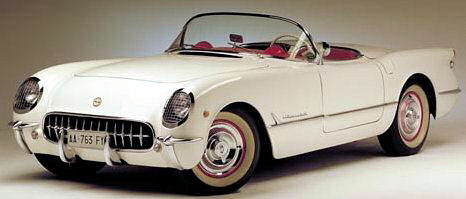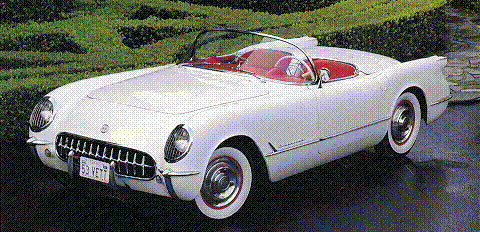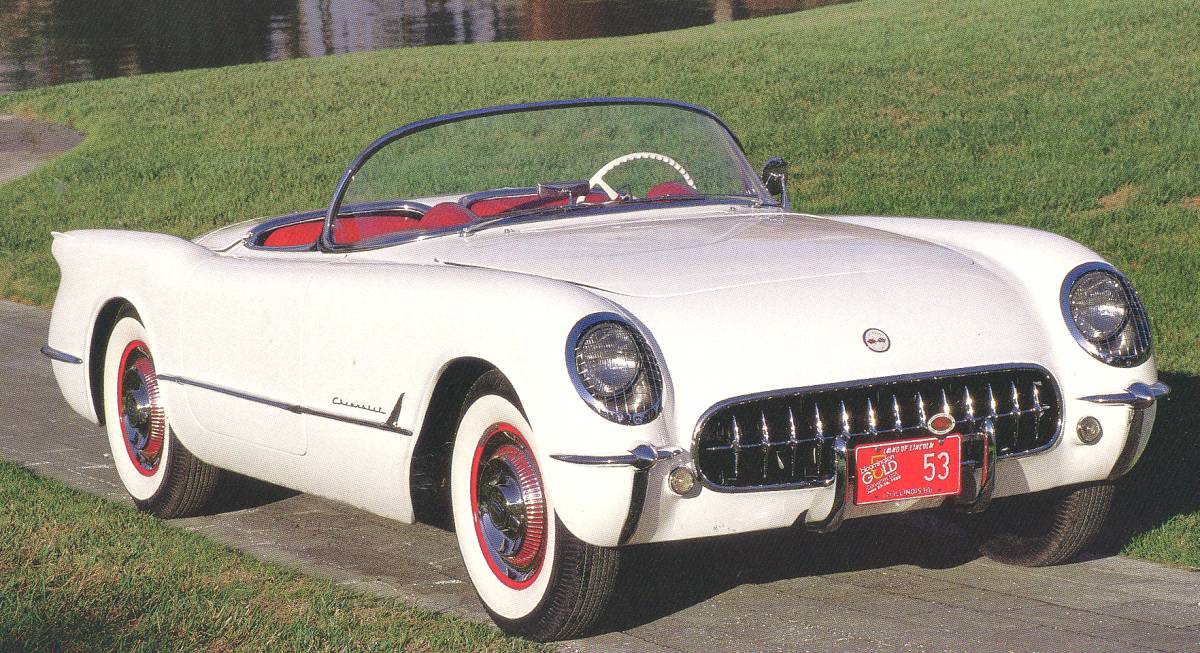1953 CORVETTE

Each 1953 Corvette was virtually hand-built and a lot of minor changes were made during the production run.
The new 1953 Corvette had
The interior featured
All of the first-year cars were Polo White with Sportsman Red interiors.
All had black canvas convertible tops which manually folded into a storage space behind the seats.
Other 1953-only features included
Short exhaust extensions were used on all '53s (and early '54s) because they were prone to drawing exhaust fumes into the car through the vent windows.
A black oilcloth window storage bag was provided to protect the 1953 Corvette's removable plastic side windows when stowed in the trunk.
| Series No. | Body/Style No. | Body Type | Factory Price | Shipping Weight | Production Total |
|---|---|---|---|---|---|
| 2934 | 2934 |

2-dr. Roadster |
$2774 | 2705 lb | 300 |
| Engine type | six-cylinder, inline, overhead valve unit |
|---|---|
| Block | cast iron block. |
| Displacement | 235.5 cid (3.9 liters) |
| Bore & Stroke | 3.56 in. (90mm) x 3.93 in. (100mm) |
| Compression | 8.0:1. |
| Power | 150 brake hp @ 4200 rpm. |
| Ignition | single breaker point. |
| Carburetor | Three Carter Type YH one-barrel Model 2066S on the early models and Model 2055S on later models. |
| Wheelbase | 102 inches (2.591 m) |
|---|---|
| Overall length | 167 inches (4.242 m) |
| Front tread | 57 inches (1.448 m) |
| Rear tread | 58.8 inches (1.494 m) |
| Wheels | steel disk |
| Tires | 6.70x15 |
| Front suspension | coil springs with tubular shock absorbers and stabilizer bar |
| Rear suspension | Leaf springs, tube shocks and solid rear axle |
| Brakes | Drum on all four wheels |
| Axle ratio | 3.55:1 |
1953 Corvette Notes


